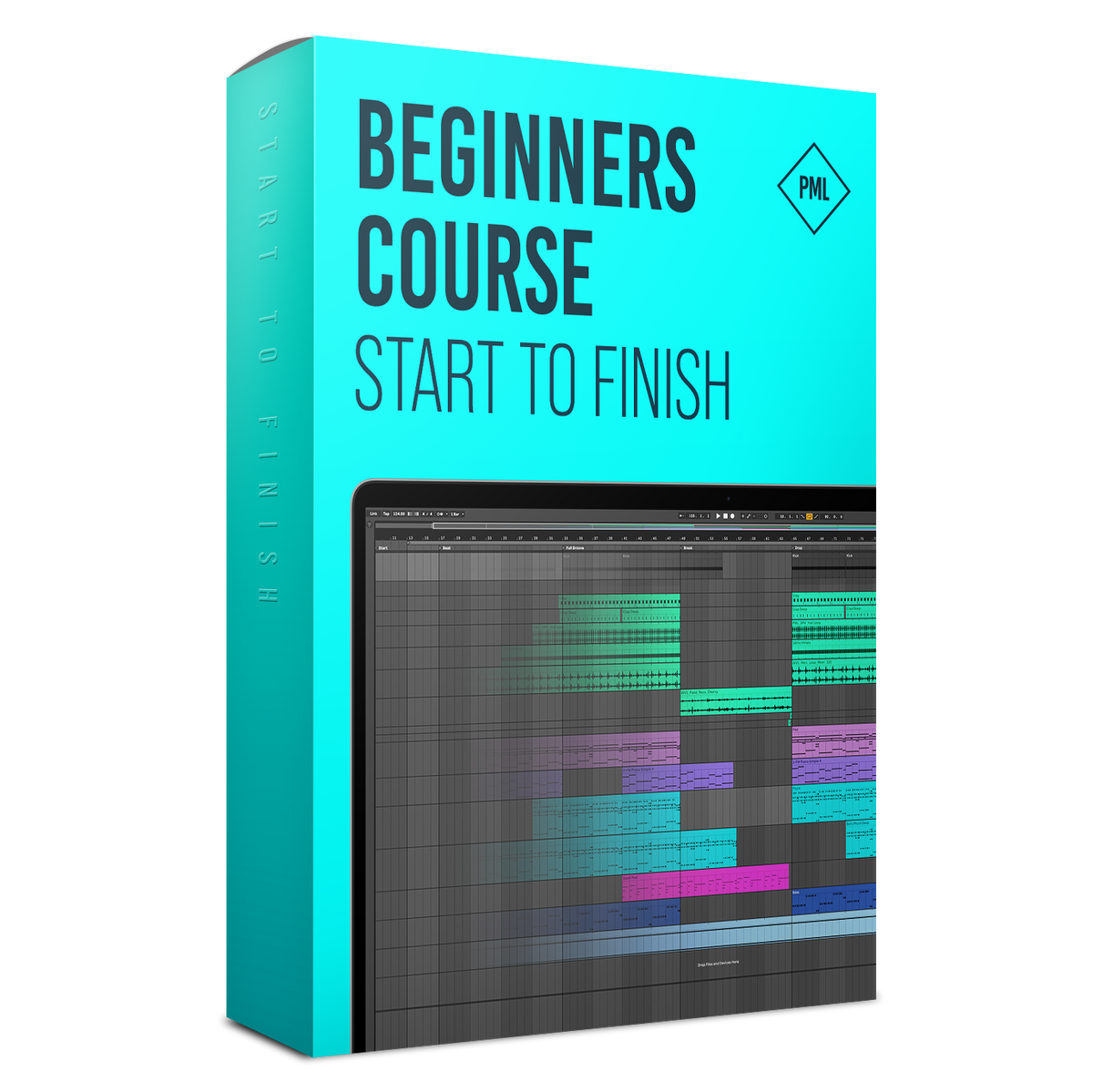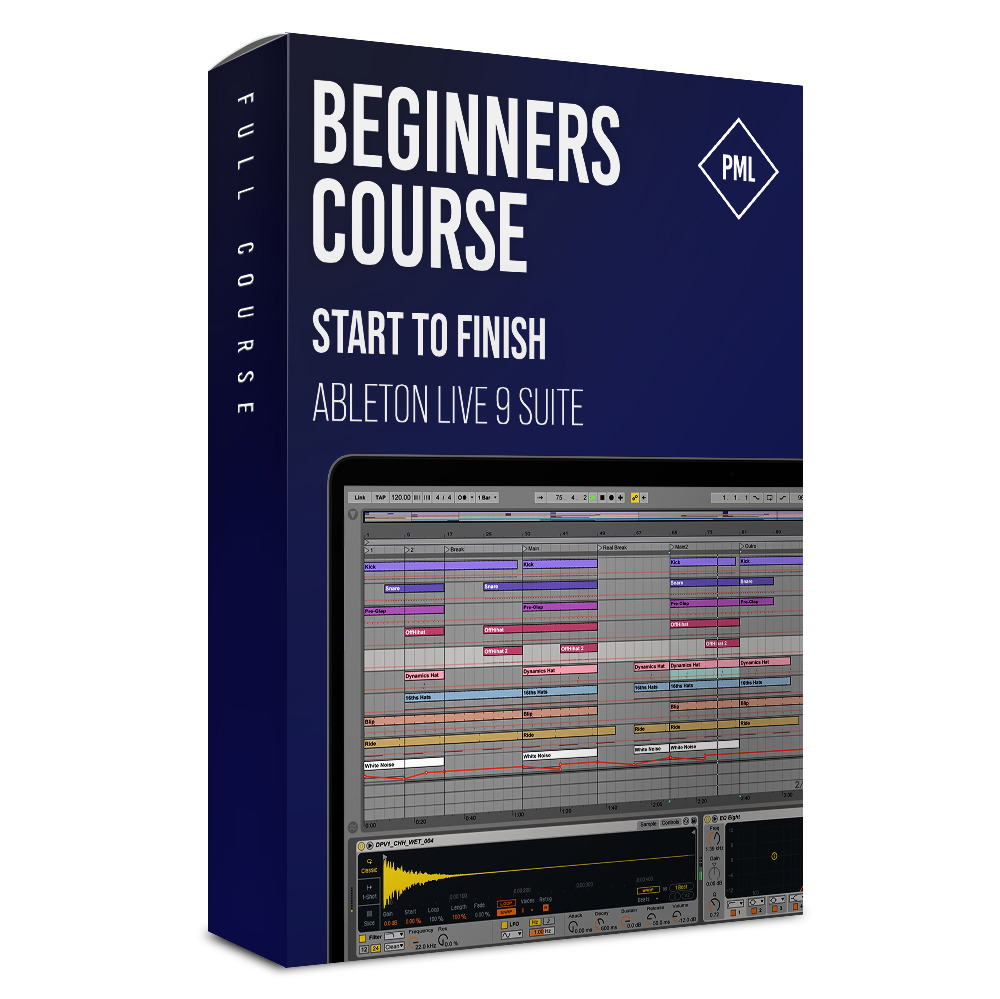To make a piano house track in Ableton Live, start by creating a solid baseline and chord progression. Then, add percussion, melodies, and effects to complete the track.
We will explore the steps to create a piano house track from start to finish in Ableton Live and provide tips on how to overcome common challenges that producers face during the process. From choosing the right sounds and samples, to arranging the track and mixing the final product, we will cover everything you need to know to create a professional sounding piano house track that will make people dance.
So, let’s get started!

Credit: www.productionmusiclive.com
1. Setting Up Ableton Live
To make a piano house track from start to finish in Ableton Live, the first step is to set up the software. Here are the essential steps to follow:
Installing Ableton Live
The installation process of Ableton Live is straightforward, but it varies depending on your operating system. If you are using a Mac, download the DMG file from the official website and follow the installation instructions. If you are on Windows, download the executable file from the official website and run the installer.
Configuring Midi Settings
The next step is to set up the MIDI devices in Ableton Live, which will allow you to control the virtual instruments in the software. To configure the MIDI settings, go to the Preferences menu and select the MIDI tab. Here, you can add your MIDI devices and map the controls to the software. Ensure that each device is recognized by Ableton Live so that you can use it in your session.
Once the MIDI devices are set up, you can start creating your piano house track by adding virtual instruments and selecting the appropriate MIDI input. By following these simple steps, you can set up Ableton Live and get started with producing your own piano house track from scratch.

Credit: www.productionmusiclive.com
2. Choosing The Right Samples And Instruments
A crucial step in making a piano house track in Ableton Live is choosing the right samples and instruments. Pay attention to the tone, velocity, and timbre of each sound you use to create a cohesive and dynamic track.
When it comes to making a piano house track, choosing the right samples and instruments can make or break your production. In this section, we’ll dive into selecting a piano instrument, choosing drum samples, and adding bass and melody to create the perfect piano house track.
Selecting A Piano Instrument
The piano is the heart and soul of the piano house genre. Therefore, it’s essential to choose a piano instrument that is suitable for your production. Whether you prefer the sound of a grand piano, upright piano, or electric piano, Ableton Live got you covered. Moreover, a well-sampled piano library can add depth and dimension to the sound. Once you select the piano sound, it’s vital to find the right chords and progressions to create a strong foundation for your track.
Choosing Drum Samples
Drums are an essential element of the piano house track, providing the necessary rhythm and groove to the production. Therefore, choosing the right drum samples is crucial. A good drum sample library will consist of various percussion and drum sounds, including kicks, snares, hats, cymbals, and percussion. Make sure you pick a drum kit that matches your track’s genre and vibe, and it complements your piano sound. Layering several drum samples can also add depth and punch to your drum groove.
Adding Bass And Melody
Now that you’ve selected your piano sound and drum samples, it’s time to add some bass and melody. The bassline is essential, providing depth and rhythm that complements the other instruments. When selecting a bass sound, consider the genre and the key of your track. Finally, it’s time to add melody to your track. Melodies can be created using various instruments, including synthesizers, guitars, and even vocals. An excellent melody should be memorable and catchy, so spend some time experimenting with different instruments until you find the right sound. In conclusion, choosing the right samples and instruments for your piano house track involves selecting the right piano sound, drum samples, and adding bass and melody. Taking the time to consider each element and experimenting with different sounds can help you create a unique and memorable piano house production.
3. Creating A Catchy Chord Progression
Crafting a captivating chord progression is key when making a piano house track in Ableton Live. Focus on experimenting with different chord combinations and patterns to create an unforgettable melody that will keep the listener engaged from start to finish.
Choosing A Key For The Track
To start creating a catchy chord progression for a piano house track, the first step is to choose a key that will set the appropriate mood for the track. Consider factors such as the emotion you want to convey, the vocal range of any potential vocalists, and the key of other tracks in your project. It’s important to choose a key that will complement all other elements of the track, including your chosen bassline and melody. Once you’ve selected the key, it’s time to create the chord progression.
Creating A Chord Progression
To create the chord progression, start by selecting a chord that fits within your chosen key. From there, experiment with different chord progressions until you find one that’s catchy and fits the overall mood of your track. Ensure that each chord transition sounds smooth and natural, and add variations to make the progression interesting. Remember to listen carefully to the overall sound of the progression and how it works with the other elements of your track.
Tips For Ensuring A Catchy Chord Progression
– Start with a simple chord progression and modify it as you go along – Experiment with different styles and techniques, such as arpeggios and inversions – Use chords that complement each other in terms of sound and mood – Pay attention to the rhythm of the progression and make sure it’s complementary to the beat of your track – Add variations to make the progression interesting and dynamic Crafting a catchy chord progression for a piano house track is a pivotal step in bringing your music to life. With the right key, careful attention to chord selection and progression, and experimentation, you can create an ear-catching and mood-setting chord progression that truly elevates your track.
4. Building The Structure Of The Track
The structure of the track is crucial when making a piano house track in Ableton Live. By carefully selecting and arranging different elements, such as drum patterns, chords, and melodies, you can create an engaging and dynamic track that will keep your audience listening.
To build a successful piano house track, it’s essential to create a compelling and cohesive structure. This involves creating a basic beat, arranging the intro and breakdown, and building the chorus and drop. In this section, we will discuss each of these steps in detail.
Creating A Basic Beat
Creating a basic beat is the foundation of any dance track. To start, open up Ableton Live and create a new MIDI track. Choose a drum kit that fits the style of your track. Add a kick drum on the first and third beat of each bar and a snare on the second and fourth beat. You can add additional percussion elements like hi-hats, claps, and cymbals to add variation and texture to your beat.
Arranging The Intro And Breakdown
The intro and breakdown are the essential parts of any track. The intro sets the tone for the song and prepares the listener for what’s to come. The breakdown is where the energy of the song drops dramatically, allowing the audience to catch their breath. Start by creating an eight or sixteen-bar loop with the basic beat you created. This will serve as the foundation for your intro and breakdown. For the intro, you can add additional elements like pads or arpeggios to create a sense of anticipation. Strip the track back to just the basic beat for the breakdown, adding in atmospheric effects like reverb and delay to add depth and space.
Building The Chorus And Drop
The chorus and drop are where the energy of the track peaks. This is where you can add in your piano chords and create a catchy melody that will keep the listener engaged. Start by creating a new MIDI track and choosing a piano sound that fits your track. Using the basic chords of your track, play around with different chord progressions until you find a melody that works well. You can add in additional instrumentation like bass, strings, or synths to add depth and variation. Once you have your chorus and drop, it’s time to arrange the track. To build tension and anticipation, create a riser using a white noise sample and automate the volume to build up to the drop. After the drop, bring back in the basic beat and add in additional elements to keep the energy of the track high. In conclusion, building a structured piano house track is a crucial step in creating a successful dance hit. By following these steps, you can create a cohesive and engaging track that will keep your audience on the dancefloor.
5. Adding Effects And Automation
To create a compelling piano house track in Ableton Live, adding effects and automation is crucial. These elements help to add depth, dimension, and interest to your music, enabling you to create a fully immersive listening experience for your audience.
By experimenting with different effects and automation techniques, you can transform your track into a masterpiece that is sure to delight and inspire.
To enhance your piano house track, you need to add effects and automation. This will bring out the best of your composition and add life to your music. Here are some of the best ways to do it:
Using EQ and filters
The equalizer is a tool that allows you to shape and control the frequencies of your track. By using EQ, you can separate the low, mid, and high frequencies of your track and adjust them accordingly. To do this, simply add an EQ plugin to your track and start adjusting the frequencies. Filters are another great tool that can be used to manipulate the sound. By adding a low-pass filter, you can remove the higher frequencies of the track and create a low-pass effect.
Adding reverb and delay
Reverb and delay are two crucial effects that can add depth and space to your track. Reverb can make your track sound as if it was recorded in a big room, while delay can create a rhythmic effect. To add these effects, simply add a reverb or a delay plugin to your track and adjust the parameters to your liking.
Automating effects and parameters
Automating effects and parameters is a great way to add variation and movement to your track. By automating an effect or parameter, you can change the sound of your track over time. For example, you can automate the cutoff frequency of a filter to create a sweeping effect. In Ableton Live, you can automate any effect or parameter by clicking on the “A” button next to the control and then adjusting the parameter over time using the automation line. To create a professional-sounding piano house track, it’s important to add effects and automation. By using EQ and filters, adding reverb and delay, and automating effects and parameters, you can take your track to the next level and create a unique and engaging composition.
6. Mixing And Mastering The Track
In the final stages of producing a piano house track in Ableton Live, it’s crucial to focus on mixing and mastering. This involves polishing the sound and bringing out the best possible quality. With attention to detail, you can create a professional and polished track that’s ready for release.
Balancing Levels
The first step in mixing a piano house track is to balance the levels of all the individual elements in the song. This involves adjusting the volume of each track to ensure that they are all audible without any one element overpowering another. To do this effectively, use your ears and trust your instincts. You can also use frequency analyzers to identify any areas where certain elements may be clashing, and adjust accordingly.
Adding Compression And Other Mixing Techniques
Compression is a vital tool in mixing any genre of music, and piano house is no exception. When compressing your tracks, be careful not to overdo it as this can cause the sound to become too squashed. Different mixing techniques such as EQ, panning, and reverb can also be used to enhance the overall sound and create a more dynamic mix. Experiment with different techniques until you find the right balance for your track.
Mastering The Final Mix
Once you have finished mixing your track, it’s time to master the final mix. This involves equalizing the frequency balance of the track, compressing the mix, and adding any necessary effects such as saturation or stereo-widening. When mastering a piano house track, it’s important to ensure that each element is clear and distinct, and that the track retains its energy and groove. Use reference tracks to help you achieve a commercial sound and ensure that your track is ready for release.
7. Exporting And Sharing The Track
Once you have finished creating a piano house track in Ableton Live, it’s time to export and share it. You can export it as a WAV or MP3 file and share it on social media or music platforms to showcase your work.
Once you have finished editing and mastering your piano house track in Ableton Live, it’s time to share it with the world. In this post, we’ve covered the entire process of creating a piano house track, from start to finish. Now, it’s time to export your final mix and share your track on streaming platforms. Here’s how you can do that in Ableton Live.
Exporting The Final Mix
To export the final mix of your piano house track, follow these steps in Ableton Live:
- Click on “File” and select “Export Audio/Video”.
- Set the format to “WAV” or “MP3”, depending on your preference.
- Select the bit depth and sample rate.
- Choose the location where you want to save your final mix.
- Click “Export”.
Uploading The Track To Streaming Platforms
Once you have exported your final mix, you can share it on various streaming platforms such as Spotify, Apple Music, and SoundCloud. Here’s how you can do that:
- Log in to your streaming platform and select “Upload”.
- Select the file you want to upload.
- Add the track title and artist name.
- Add the track artwork.
- Set the genre and mood of your track.
- Select the release date.
- Click “Submit”.
Ensure that you have used the appropriate formatting and naming conventions for your track. This will help you to get it discovered by listeners and increase your exposure as an artist. With these simple steps, you can share your piano house track with your audience and take the first step towards success in the music industry. Make sure to promote your track on social media and other channels to reach a wider audience. Happy music-making!

Credit: www.youtube.com
Frequently Asked Questions On Making A Piano House Track From Start To Finish In Ableton Live
Can You Make House Music On Ableton?
Yes, Ableton is a popular software used by many house music producers. Its features like MIDI and audio sequencing, MIDI and audio effects, and virtual instruments allow users to create and produce electronic music, including house music. With its intuitive interface and advanced functionalities, Ableton is a top choice for DJs and music producers worldwide.
Is There A Piano Roll In Ableton?
Yes, Ableton has a piano roll feature which allows users to view and edit MIDI notes in a graphical interface. The piano roll can be accessed through the Clip View of a MIDI clip. It offers various tools for editing, quantizing and adjusting MIDI notes.
How Do I Create A Track In Ableton?
To create a track in Ableton, follow these steps: 1. Open Ableton Live. 2. Choose “File” > “New Live Set” or use the keyboard shortcut “Cmd + N” (Mac) or “Ctrl + N” (Windows). 3. In the browser, go to “Categories” and select “Places”.
4. Double-click on “Project” to create a new project. 5. In the “Session View,” click on the “+” sign to add a new track. You can choose different types of tracks, such as audio, MIDI, or Drum Rack.
How Do I Make My Piano Roll Bigger In Ableton?
To make the piano roll bigger in Ableton, simply click and drag the vertical line that separates the piano roll from other views in Ableton. This will expand the piano roll and make it larger.
Conclusion
Crafting a piano house track requires patience, creativity, and skill. As demonstrated Ableton Live offers an array of tools for music producers to create unique and high-quality tracks. From designing the melody to adding effects, every step in the process plays a crucial role in the final outcome.
By taking the time to experiment and refine, producers can achieve a polished, professional, and memorable result. Incorporating these techniques into your workflow can help you master the art of crafting piano house tracks in Ableton Live.